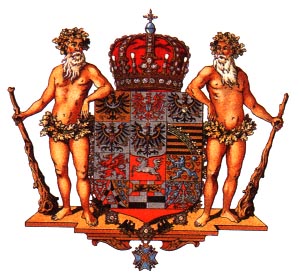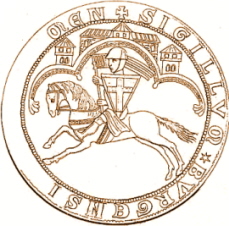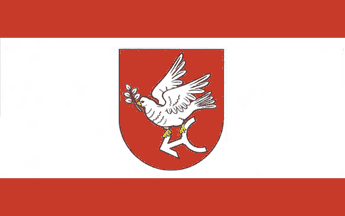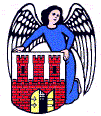

Kazimierz Sypniewski of Kowalewo, Poland
Kazimierz is a slavic name meaning "bringing peace." St Kazimierz (1458-1484) is the patron saint of Poland and Lithuania. He was made a saint because he devoted his short life to prayer and to helping the poor. St. Kazimierz was canozed in 1521. Kazimierz was also the name of the first Polish king, Kazimierz (1310-1370), "the Great."
Written and researched by Margaret Odrowaz-Sypniewski© 1998.

This article will explore all of the history of the area where Kowalewo was located, and the reasons why the Sypniewski family left their home in Kowalewo to emigrate to the United States of America, and in particular to Glassport, Allegheny County, Pennsylvania.
PRUSSIA AND THE TEUTONIC KNIGHTS:
Prussian nobles lived by hunting and warfare, and on the labor of slaves. Women and children, who were slaves, were made household help and concubines. Many captives were sold down the rivers to the Turks and Byzantines. Slavery was one reason the Teutonic Knights made war on Prussia. The first Teutonic Knights' Grand Master in Prussia (from 1230-1239) was Hermann Balk. Hermann was the former Canon of the Hildesheim Church. Balk died circa 1239. They often fought along the Vistula River. The Poles, Pomeranians, and the Holy Roman Empire all fought the Prussian.
The first missionaries such as Adalbert of Prague (997) and Bruno of Querfurt (1009) died as martyrs. King Boleslaw III (1146-1173) led a crusade against the Prussians. Mecklenburg and Pomerania were converted by the Wendish Crusade. The Teutonic Order often called themselves "The Knights of Christ." Their oldest records called them the "Order of St. Mary of the German's in Jerusalem." The Order originated at the seige of Acre in 1190, during the Third Crusade. German merchants from Bremen and Lübeck made a field hospital to tend the sick and injured. The Teutonic Knights wore a black cross on a white robe and mantle. By 1197, their Order received a charter of incorporation. In 1204, the Swordbearers (Brothers of the Militia of Christ) were founded, in Livonia, and their first battle was in 1205. They were founded as part of the Hohenstaufen emperor's crusade to the Holy Land. Their fourth Grand Master, Hermann von Salza, expanded its powerbase. In 1206, the abbot of the Polish Cistercian monastery, at Lekno, went to Prussia to negotiate for the release of prisoners taken during raids. Conrad von Landsberg, from Meissen, commanded the Teutonic Knights to Prussia. Conrad also created his own military order, they were wiped out while fighting in Volhynia.

In 1211, the Teutonic Knights defeated the Cumans in Transylvania, but they became too powerful for the Hungarian king and his court, so they were expelled. Emperor Frederick II, the Holy Roman Emperor, took up the cross in 1215, and he helped finance the Teutonic Knights. The Knights were asked to help King Andrew of Hungary to rid themselves of the Cuman tribes. After the Order helped them, they set up a colony there and saw to it that they were independent of Hungarian laws. In 1226, Duke Conrad of Mazovia employed the services of the Knights in his struaggles with the Prussian pagans. Conrad gave the Knights the lands north of Torun in exchange for their protectionm and the converting of the pagans to Christianity. "In 1228, the armed German monks of the Teutonic Order of the Cross (or Krzyzacy) succeeded in obtaining the Act of Kruszwica from Duke Conrad I of Mazovia. Conrad I c. 1187-1247) was Prince/Duke of Mazovia, Kujavia, Sieradz, and Leczyca in 1202. He founded the Brotherhood of Dobrzyn in Mazovia in 1209. Conrad of Mazovia was no saint. He had murdered his voivode, among other crimes. In 1222, the Teutonic Knights were asked by the Poles to protect their borders. In return for their services, the Teutonic Knights wanted Kulm (Chel~no) along the Vistula River. The Golden Bull of Rimini was signed by the Pope, it enabled Emperor Friedrich II to call upon the Knights in an land he conquered. By 1226, Conrad had invested his Brotherhood in the district of Chel~no, and the contract was sealed in 1228. At first they were known as the Brethen of Dobrzyn. The temporary fief was established for the purpose of the conversion of the Balto-Slavic Prussians to Christianity " (Pogonowski, Iwo Cyprian, Projekt Zwiazku Wkadcow Krola Jerzego z Podiebrad.
In 1230, the Teutonic Knight's Grand Master, Herman von Balk, arrived and they harried the Prussians with warfare and killings until 1288. By 1235, the Brotherhood of Dobrzyn and the Livonian Order of the Brethren of the Sword (in 1237),patronized by the Bishop of Riga, was absorbed into the Teutonic Knights. The Order then controlled 100 miles along the Baltic Sea, by 1239. In 1308, the monks committed mass murder of the Polish population in Gdansk and Tczew, resulting in both cities being under the Teutonic Knight's control. Then the Germans spread yet further into the East Baltic. The towns of Toruñ and Chel~mno were founded by the Teutonic Knights. Torun Castle was built in 1231, Marienwerder in 1233, and Elbing in 1237. The city was modeled after Magdeburg. Duke Conrad of Mazovia's "temporary grant" was falsified (in 1234) by the Brethren to read as "permanent." Thus there was a German monastic state in Prussia. Conflicts between Germans and Poles continued for 250 years.
By 1273, there were four realms in this region:
The Order perpetuated a legend:
The Teutonic Knights fought against the Lithuanians in 1279. Two knights were captured and were to be buried alive. Two Teutonic Knights were tied to separate large tree with their war horses beneath them. Both men and their steeds were to be burned. However, to make their point they would burned one at a time, so the second man could see what was to be his fate. Legend says that as the flames rose around the first horse that the heavens opened up and a great light came down to the crusader amd dispersed the flames. Then the light took the first crusader to the heavens. The Lithuanian pagans saw a beautiful maiden ascend into the heavens after the knight. The Lithuanians thought this was some sort of magic and then proceeded to burn the second knight. This time the heavens opened again and a giant white bird flew into the flames and carried this knight away too. The pagans were said to be in awe of the power of the Christian's god, who protected their followers.
In 1307, Pope Clement V authorized the arrest and suppression of the Teutonic Knights. In 1308, the Order won control of the region around Gdansk and moved its headquarters to the castle of Marienburg (now Malbork).
In 1320-1321 the Catholic Church held a court in Inowroclaw, and ordered the Teutonic Knights to pay damages to Poland and leave Pomerania. The Order did not obey. From 1310-1350, the Teutonic Knights had both fame and wealth. They wanted to rule in Prussia because of their rivers and grains. The rivers in this area served as highways of transport and trade to the Baltic Sea.
In 1325, Poland and Lithuania made a treaty against the Teutonic Order. This led to a stronger alliance when King Kazimierz of Poland married Princess Aldona, the daughter of the Grand Duke Gedymin (1316-1341) of Lithuania. King Kazimierz (1310-1370), "the Great," was crowned in 1333. Kazimierz III died in 1370, and even though he was married four times, he died without a male heir. Poland was left with more wealth and security than ever before.
In the Union of Krewo, The Grand Duke of Lithuania committed himself to converting the Lithuanians (still pagans), to Roman Catholic Chritianity, and to unite with Poland all of Lithuania and Ruthenian lands. Jagiello confirmed the Act of Koszyce made in 1374. Following these events, Jagiello (1377-1392) of the House of Liutaurus (Lithuania) was baptized, as a Christian convert, in February 1386. He then could marry Jadwiga (C. 1373-1399), the daughter of Louis the Great (r. 1360-1384) in Krakow, Poland. Louis or Ludwik of Hungary was the son of Charles Robert of Anjou. Jagiello was 26 at the time of this marriage. This marriage was not necessarily because of his convictions and great love, but as a business move to unite Lithuania and Poland. His name was Zadislas, but the Poles called him "Jagiello." Many think that Jadwiga was frightened to marry a man who had murdered his uncle Kestutis, and imprisoned his cousin Vytautus. He was a former pagan, and Jagiello's chronicler, Dudugosz said that Jagiello had a prodigious sex drive, with inclinations towards forbidden acts. After Jadwiga's death (at age 26) and that of her newborn daughter, Bonifacia, in 1399, Jagiello married three more times. Jagiello later died, in 1434, after catching a chill during a night stroll at age 80. Jadwiga was later made St Jadwiga, by the Church, for her sacrifices to Poland. Jadwiga's legend was that Jagiello was not always kind. Jagiello had the Polish throne in his pocket and he remarried. Jadwiga's brother was Louis II, Duke of Anjou (1384-1417).
By the Treaty of Kalisz (in 1343), Kujawy and Dobrzyn were returned to Poland. King Kazimierz III, "The Great (Weiki), was said to have built eighty major castles. However, Chelmo and Pomerania, including Gdansk, were to become the property of the Teutonic Order. In 1364, Kazimierz founded the first Polish University in Krakow, which was later called Jagiellonian University. This was one year before the University of Heidelburg in 1385. Before this, the oldest University in Eastern Europe was the University of Prague. Prague was founded in 1348.
After the institution of the University, there arose many new Polish scholars. Jan Czarnbow (c. 1320-1387) wrote the first diary of Polish literature. Sl~ota (in 1400) wrote a book on etiquette. Latin was the international language of law and science. Czech literary language was more advanced than Polish, before this.
The Union of Kalmar (1397) was concluded during during the coronation of Polish Prince Eric Pomorski (c. 1382-1459). Eric was the son of Wracislaw VII, the great grandson of Casimir the Great (1333-1370) of the House of Piasts. Eric (1396-1439), of the House of Pomerania, was the King of Denmark, Sweden, and Norway in 1397, and he fought against the German expansion in the Baltic. He made an alliance with Poland against the Teutonic Order in 1419.
The tyrannical rule of the Teutonic Knights resulted in the founding of the "Salamander Society" or "Reptile Association," in 1397. This group's main reason for existence was to overthrow the rule of the monastic order.
A "Great War" was fought from 1409 until 1411, as the Teutonic Knights seized Samogitia, in northern Lithuania. Their excuse being that they were still pagan. The Battle of Tannenberg-Grunwald was won by June 30, 1410, with the assistance of the Czech Hussites and auxilaries from Smolensk. The chief of the Teutonic Order, Eric von Jungingen was killed on the battlefield. On February 15, 1410, King Wenceslas of Bohemia announce that Dobrzyn should go to Poland and Samogitia to the Order. However, Dobrzyn was held by the Teutonic Knights until Samogitia was theirs. Poland was not happy with Wenceslas.
Sigmund of Hungary (1387-1437), of the House of Luxemburg, and the Order made a pact. For 300,000 ducats, Sigmund would attack Poland from the south after the Truce of 1404 expired. After their victory, the Order received Samogitia, Lithuania, Dobrzyn, and Kujavia. Sigismund received Moldavia and some border territories.
On October 10, 1419, at Koronowo, there was a peace pact. Dobrzyn province was returned to Poland, while Zmudz was given back to Lithuania. The Teutonic Knights were made to pay 6,000,00 groszes to Poland.
There is a link to this battle and the Russo-German battle of Tannenberg in 1914. Hitler and Stalin saw the original battle as a symbol of the past struggles between the Germans and the Slavs. However, the original battle came only after a fifty (50) year struggle between the Teutonic Knights and the Polish-Lithuanian Commonwealth. During World War II there was propaganda regarding the Teutonic Knights' plight. This was to give a reason for their heinous acts.
KOWALEWO/Kowalewo Pomorskie (Schonee):
Kowalewo means [place] of the Smith. The city of Kowalewo was arranged into a rectangular shape. In the times of the Teutonic Knights, Kowalewo and Komturstwo had a separate coat of arms. The coat of arms of their commander was two red fish on a white background. This arm was carried into battle by Nicholas von Viltz who died in battle.
In the beginning the city's commander was Rudolph Kowalewo, and he led 1,000 citizens. Kowalewo was a city in Royal Prussia. In 1455, King Casimir Jagiello (1440-1492)was appointed the city's foreman, Gabriela Bazynski. Later, when viovode Chelminski was in power, Jan Plemieki, a courtier of the king, was made foreman of Kowalewo Castle. All that remains of this castle today is a tower which is in ruin.
The Church of St Nichols and St Ann was established in Kowalewo in 1670. The voivode was Jan Dzial~ynski. From 1626-1629, the Swedes came to Kowalewo, and on February 11, 1629, Field Marshall Wrangel conquered and plundered Kowalewo. From 1655-1657, the Swedes occupied the city again. They left Kowalewo in near ruins and there were more Prussian and Swedish wars which continued for eighteen years. They were followed by the Saxons and Russians.
There were a series of civil wars during the reign of Augustus II, "The Strong," of Saxony (r. 1697-1704)(r. 1709-1733) and Stanislas Leszczynski (r. 1704-1709) (r. 1733-1736). On Ocotber 5, 1716, under Leszczynski's reign was a significant battle. The Russians took what was left of Kowalewo's supplies. They had 1,000 citizens and 120 homesteads before these wars, and by 1772 had only 300 citizens and 34 homesteads.
On September 16, 1772, the foreman of Kowalewo's voivode of Chelminski (Chelmo - German name is Kulm), Frances Stanislas Czapski signed an oath to the Prussian king, Frederick II (1740-1786), "The Great." Kowalewo was broken and all its lands lay empty and unworked. The town was becoming Germanized as colonists came to build new homesteads, with Prussia's help. All former governments were replaced and were now part of the Regenstchaft Marienwerde.
The new government had admired the Polish shoemakers, blacksmiths, bricklayers, and carpenters of Kowalewo. Then a municipal brewery was established by a cooperation of twelve (12) families.
Many Polish were required to join the Prussian military by Frederica II. Many ran away (deserted) from their cumpulsory service in the army. Those who were caught had their ears cut off and their land taken from them. Kowalewo's taxes rose to twenty-five percent (25%) of the inhabitant's wages.
From 1806-1807, Prussian King Frederick William III (1797-1840), son of Frederick William II, allied himself with Russia against France and Napoleon. Prussia lost two battles and the French occupied Berlin while Frederic William III ran off to Konigsburg. Polish General Dabrowski's commanders, a Major Dziewanowski of Vain and Anthony Kruszynski of Nawry, occupied Kowalewo on December 5, 1806, to protect the citizens. In 1807, the Duchy of Warsaw was set up by Napoleon. When peace came in, Tilsit was part of the Varsovian Principality and Torun. On September 10, 1811, the schools, in Kowalewo were inspected by the Management of Public Education in Warsaw.
The Russian army came to Kowalewo (in 1813) in preparation to defeat Napoleon (in 1815). Prussian armies also ran through Kowalewo. More colonists came and made all their Catholic schools Lutheran.
In 1864, there was a January uprising under the leadership of a Kowalewo farmer called Wojciech Falarski. He and his followers were defeated and put into the army. Falarski fought in Denmark, Austria, and France. He returned home after seven years. Falarski lived to age 94.
In 1883, there was a voluntary fire brigade in Kowalevo, and in 1873, Kowalewo had its first bank.
For forty years (1883-1873) Kowalewo lost its rights and laws. The Catholic Church helped its people through religious support, patriotism, and cultural support.
After 1873:
KAZIMIERZ SYPNIEWSKI LEAVES KOWALEWO:
Weronica Modzewlewski and Kazimierz Sypniewski married on July 2, 1913, in Glassport, Allegheny County, Pennsylvania, and Zgymunt Stanley Sypniewski in born in Glassport, PA. in 1914, and died March 24, 2007, in Dade City, Pasco County, Florida. Modzele is a noble-owned village in the powiat of Lomza, and the gmina and parish of Puchaly. Modzele is the family seat of the clan of Modzewlewski mentioned in records form 1403. "Bojemond" Sypniewski was a younger brother of Zygmunt's or a mistake was made?. Zygmunt [his real name] has two twin sisters: "Stanislawa" [the feminine form of Stanislaw] and "Sarah" [from Serafina, meaning "flaming one"] age 4 years, 10 months (twins) - born in PA. They do not appeared in the 1920 census, so they must have died? Or only one survived [later called Stella]? Zygmunt has a brother listed as "Stanley" in the 1920 census. By the 1930 census, we find:
Another son, Joseph Sypniewski was the youngest member of the family, after this census.
In all civil records the name Sypniewski is misspelled.
MORE ABOUT KOWALEWO:

Kowalewo is now located in Greater Poland, in the county of Golub-Dobrzyn (flag above), and in the Kujawsko-pomorskie vojvodship. Toruń is one of the capitals of the Kuyavian-Pomeranian Voivodeship since 1999.
 ...
... 
Kowalewo was called "Schonsee" during the time of the Teutonic Knights. As you can see (above), there were different arms for this Province. It was called Torun when it was part of Germany, Commander Nicolaus von Viltz fought in the battle of Grunwald, against the Teutonic Knights. Before the battle, King Jagiello went to Wawel Cathedral to pray for victory in the Chapel of Saint Stanislas. Kowalewo was in the Kujavie-Pommeran Province when it was part of Poland. The Kujavie-Pommern Crest is also that of Ciechocin.
 ....
.... 
Right: The Banner of the Komturia and Town of
Schonsze (Teutonic Order, Germany) Kowalewo, flag
in the 'Banderia Prutenorum' Manuscript
Here is a postcard of Kolalewo. Since Kazimierz was a Roman Catholic, his records are in the Archdiocese of Poznan, and in particular, the parish of Margonin, and deanery of Czarnkow.

This area has a long history for the Runge-Sypniewski family who later adopted the Odrowaz coat of arms (above).
Other cities have the Odrowaz coat of arms as part of their crest.
 ...
... 
Above you see the coat of arms of the city Golub-Dobrzyn (with the woman next to the Odrowaz crest) and the city of Zbojun (with the bird), which also is the coat of arms of Golub Dobrzyn County. Gothic castle built by the Teutonic Knights. It hosts the International Knights’ Tournaments. This town of Golub Dobrzyn lies on the Drwęca River, not far from Toruń. Towering on a steep hill is the monumental castle, build in the late 13th- early 14th century for the Teutonic Knights. The castle's most famous owner was Anna Jagiellonka, sister of King Sigismund III Vasa (1587-1632) of the House of Sweden. She had the castle expanded and surrounded by magnificent gardens. Today the castle is famous for knights' tournaments and other events held in historical costume.
SOURCES:
Davies, Norman. God's Playground: A History of Poland. Vol. I. New York: Columbia University Press, 1982.
Mierzwinski, Mariusz. Malbork: The Castle of the Teutonic Knights. Bydgoszcz: Prasowe Zaklady Oraficze, 1997.
Morby, John E. Oxford Dynasties of the World. New York: Oxford University Press, 2002.
Pogonowski, Iwo Cyprian. Poland, An Illustrated History. New York: Hippocrene Books, Inc., 2000.
Prazmowska, Anita Z. A History of Poland. London: Palgrave MacMillian, 2004.
Zamoyski, Adam. The Polish Way. New York: Hippocrene Books, 1996.
LINKS: